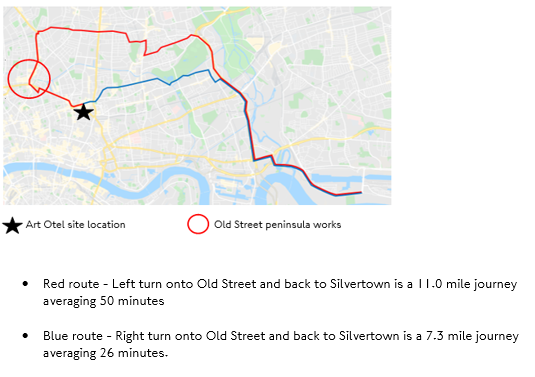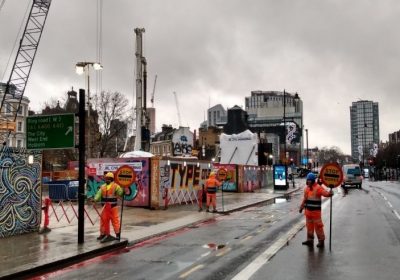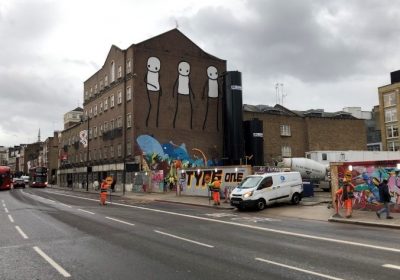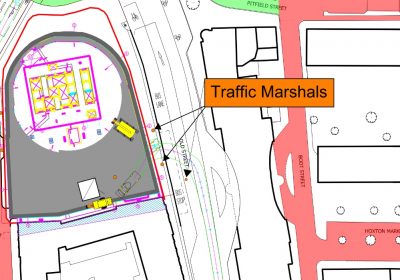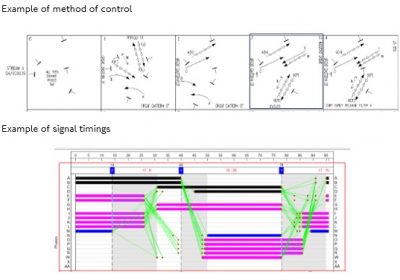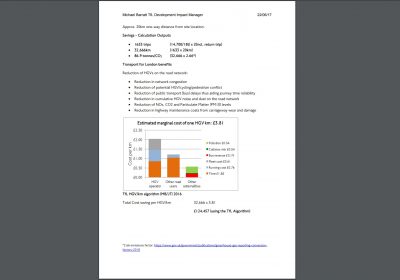Transport for London (TfL), London Borough of Hackney and JRL collaborated to reduce the negative impacts caused by challenging road layouts and the associated lengthy diversions for HGVs.
Lorries and vans play a pivotal part in London’s economy and are a necessary part of construction. Since 2010, the movements of goods vehicles have increased by approximately 20%, which is negatively impacting the environment, public health and the potential safety of many road users, particularly pedestrians, cyclists and motorcyclists.
Research shows that HGVs are involved in 63% of fatal collisions with cyclists, and 25% of fatal collisions with pedestrians despite HGVs only making up 4% of the overall miles driven on London’s roads. 20% of road collisions are caused by tiredness and stress, therefore it is of great importance that we ensure all HGV management methods are robust and efficient to reduce any negative outcomes from prolonged driving.
Construction traffic at the Art Otel Development on Old Street have a HGV management method of left in and left out of site. Vehicles are then diverted onto a longer diversion of 3.7 miles due to Old Street no longer having a roundabout as well as additional banned turns in the area. To reduce the impacts, HGVs would be required to turn right out of site. However, the egress point is adjacent to a main set of traffic signals and there are four lanes to negotiate (two being bus lanes), which raises safety concerns (see map).
TfL investigated traffic signal cycle times and method of control, traffic flows and all potential traffic conflicts. We found there was a 58 second window of opportunity to turn a vehicle, which reduced conflicts with opposing flows and causes no additional delay.
JRL supplied vehicle swept paths to prove HGVs were capable of undertaking the manoeuvre. A trial was undertaken using a van to observe the marshalling method and to assess any additional risk. The results were deemed acceptable.
To ensure all parties were in agreement of how the method was to be managed, a ‘Method of Understanding’ was drafted and signed by all key stakeholders. This included:
- Traffic marshal methodology
- Swept path analysis
- Use of physical concertina barriers to hold pedestrians
- Traffic signal data
- Agreement for marshals to attend the TfL Elite Marshal training course
- How observations were to be monitored and issues reported
The benefits included an average weekly saving of:
- 31 hours driver time
- 286 miles (avoiding left turn out of site and associated route),
- 281 kg of carbon dioxide,
- 3.9 kg of nitrogen oxide
- 281.1g of particulate matter (2.5 – 10µ)
- £1,743.4 network costs (using the TfL algorithm)
Since the method has been in place, JRL surveyed several drivers to gain feedback on the method. All drivers interviewed were very happy with the outcome and that they were being considered in the process.
Did you find this article helpful?
Please rate this article

Loading...

